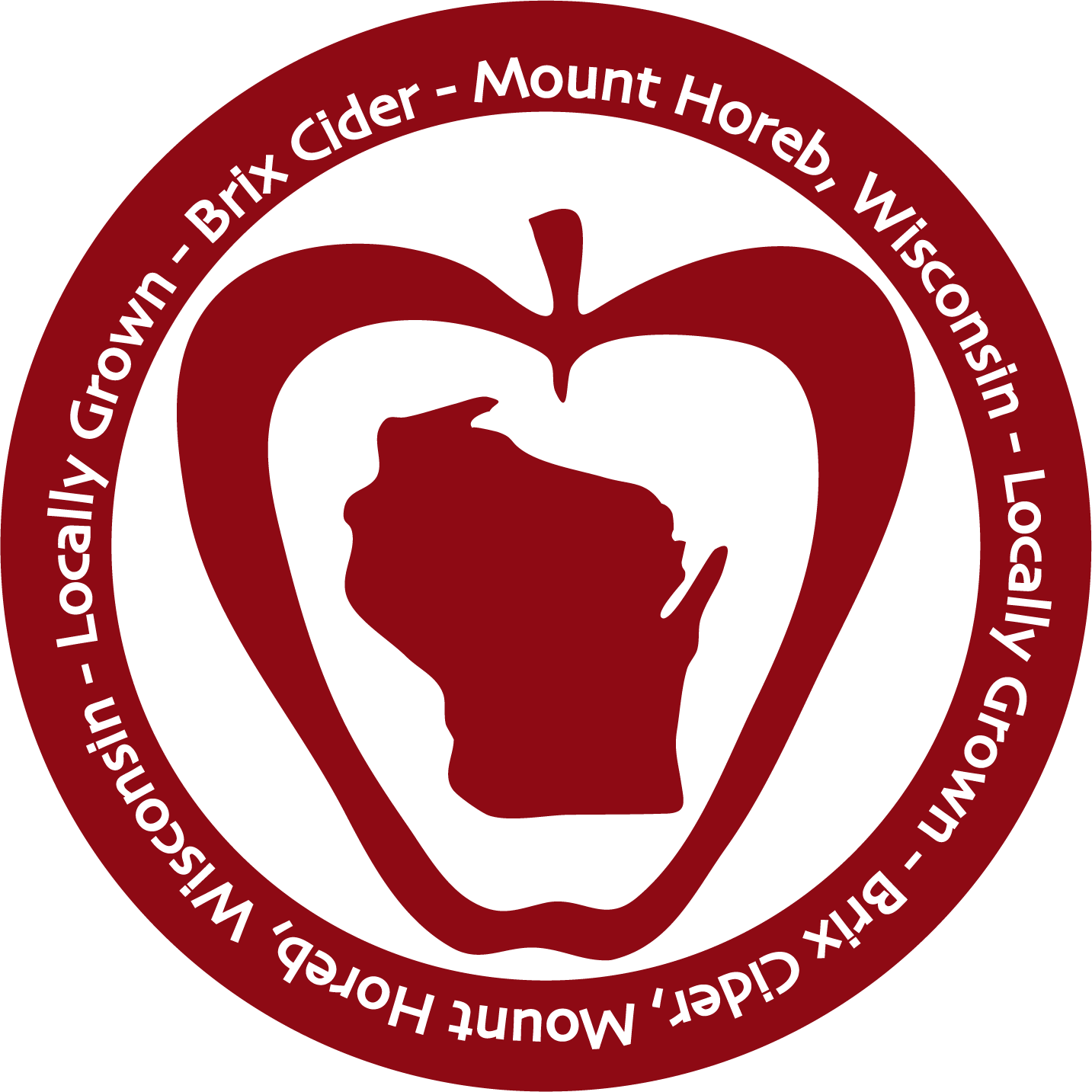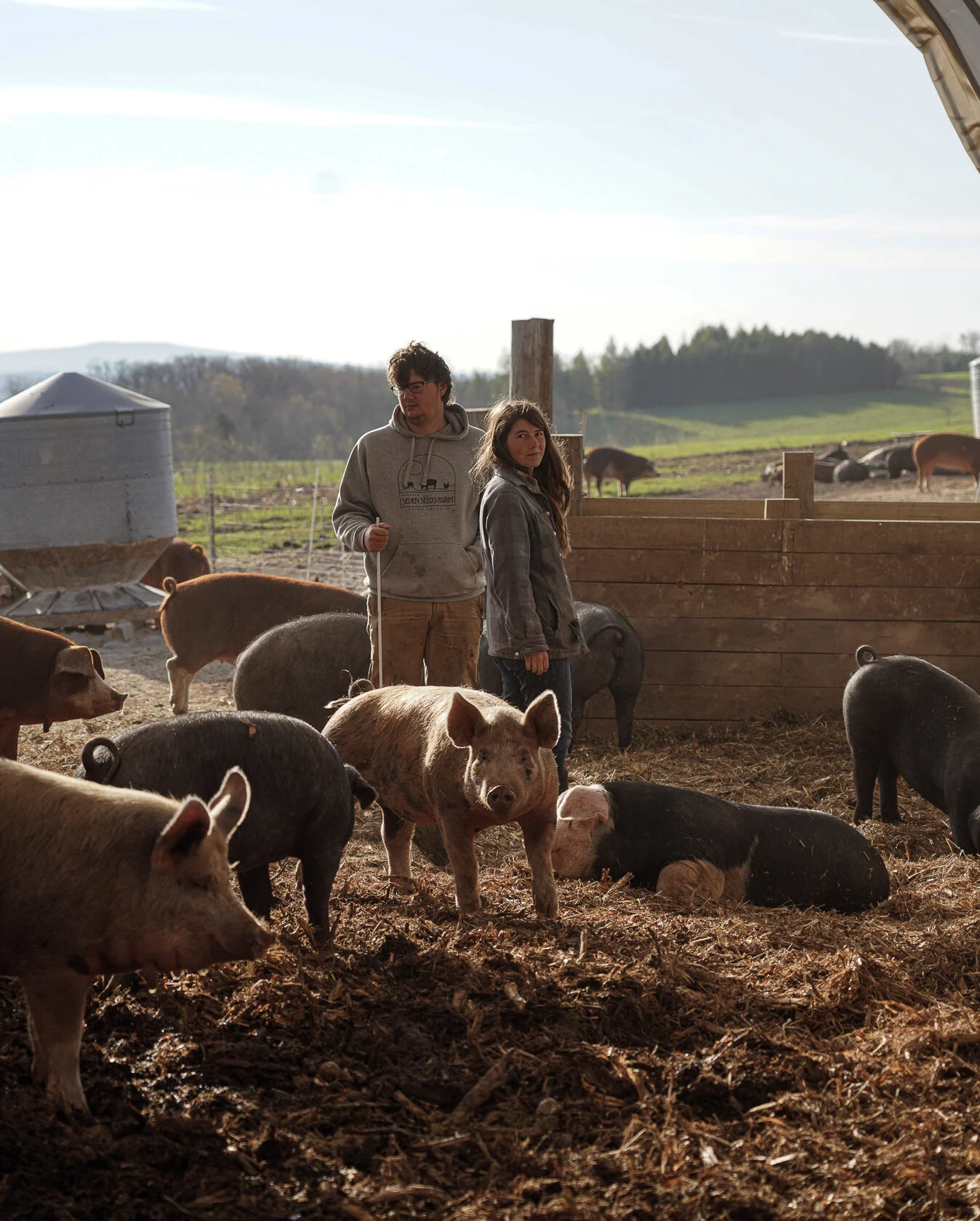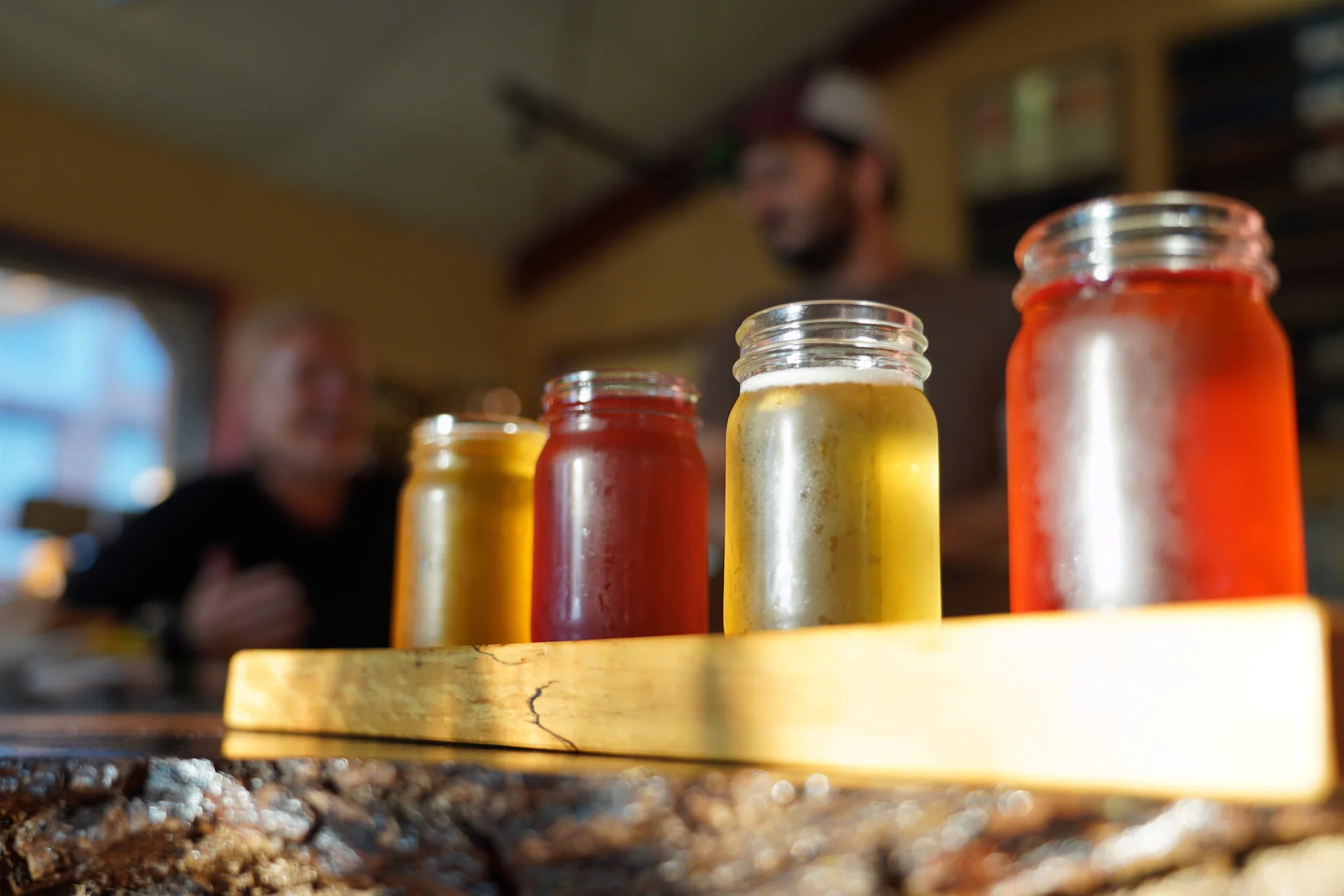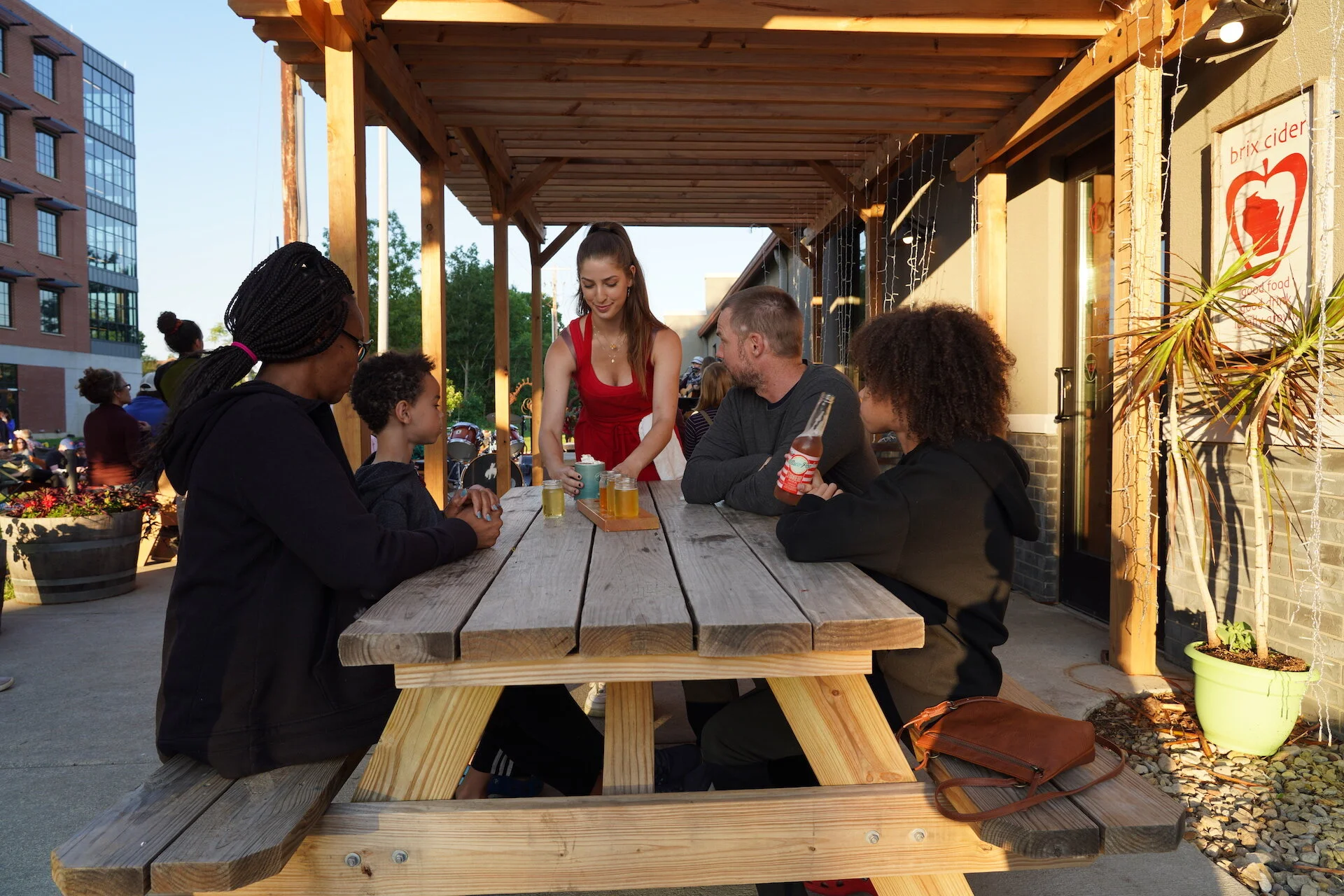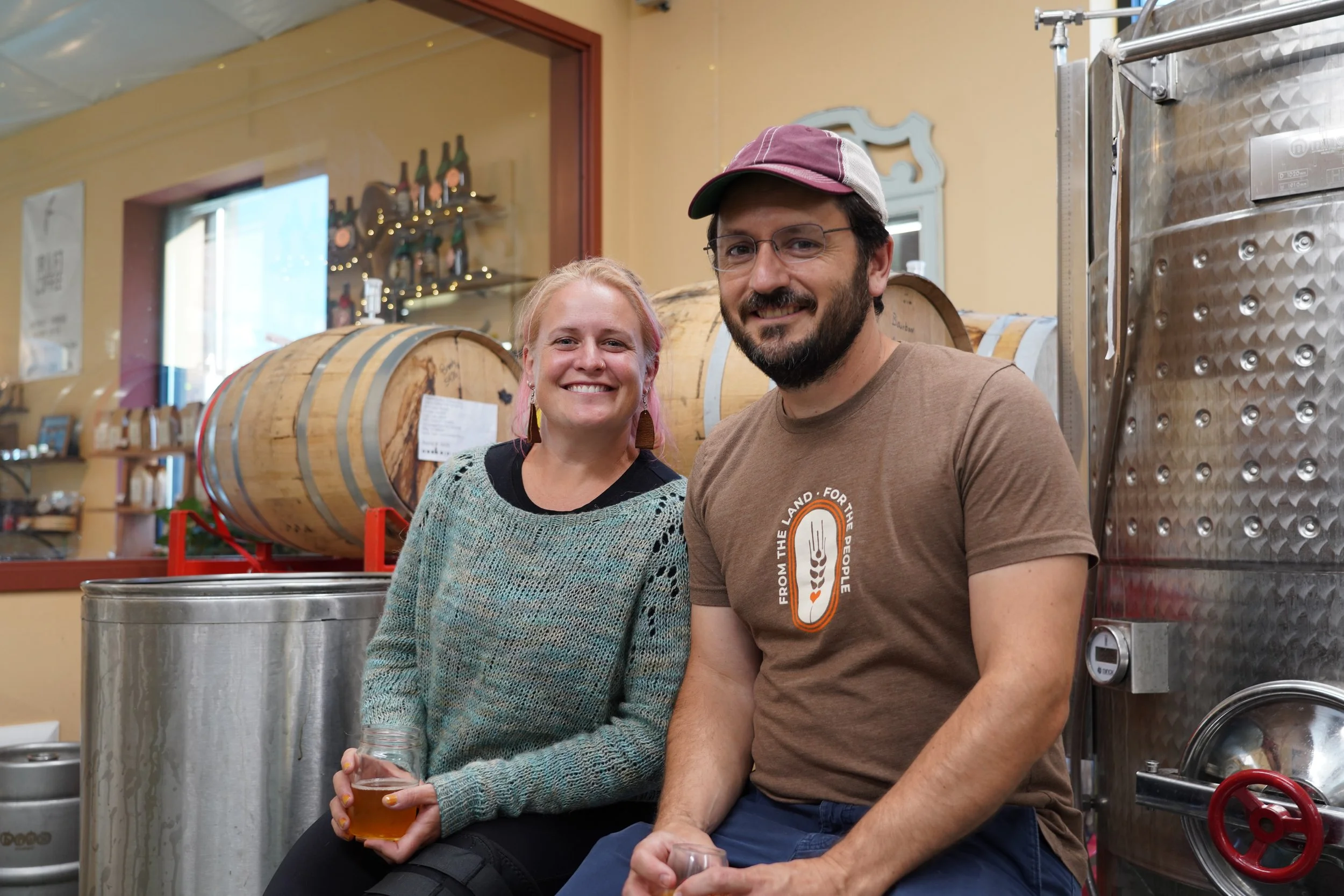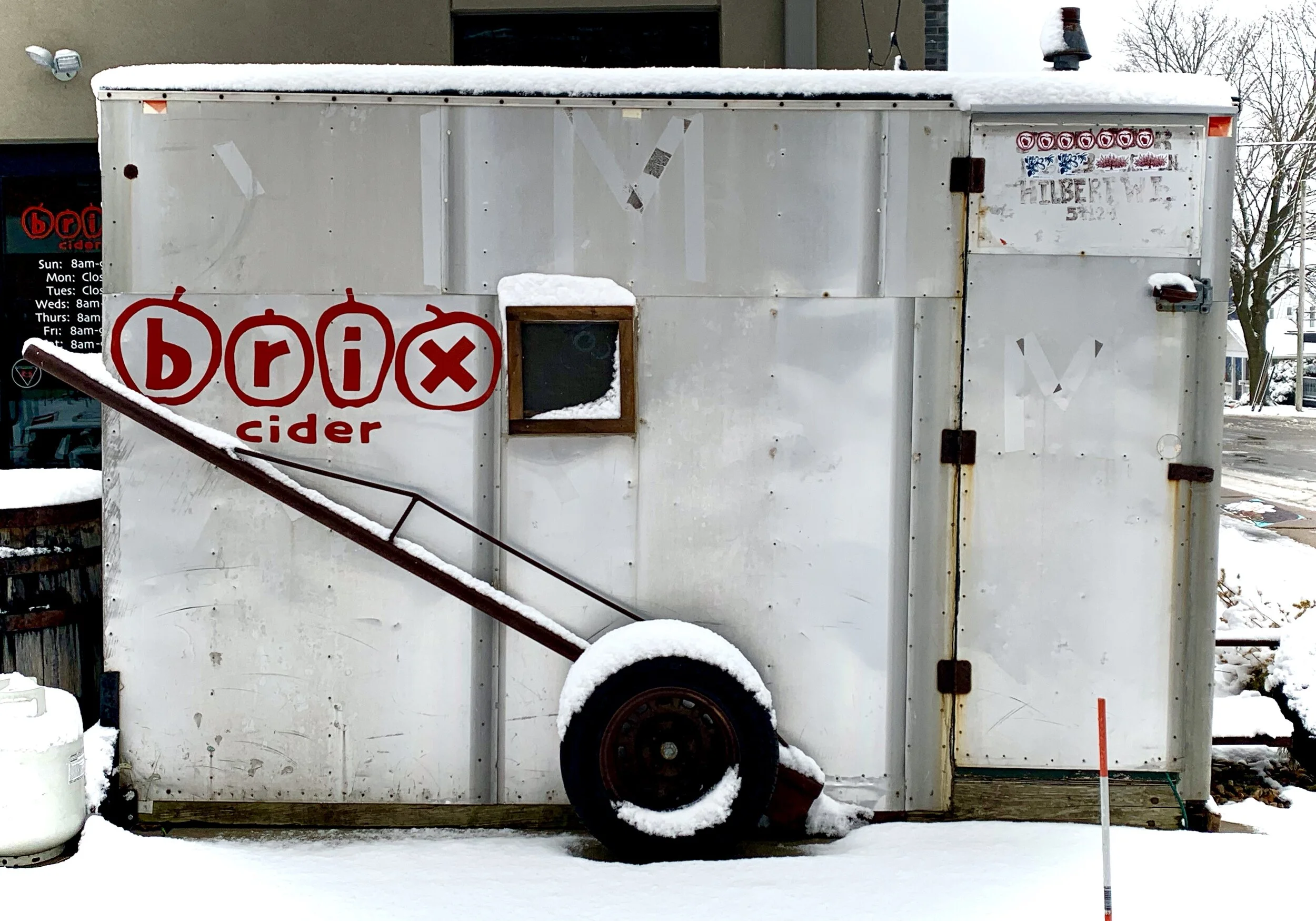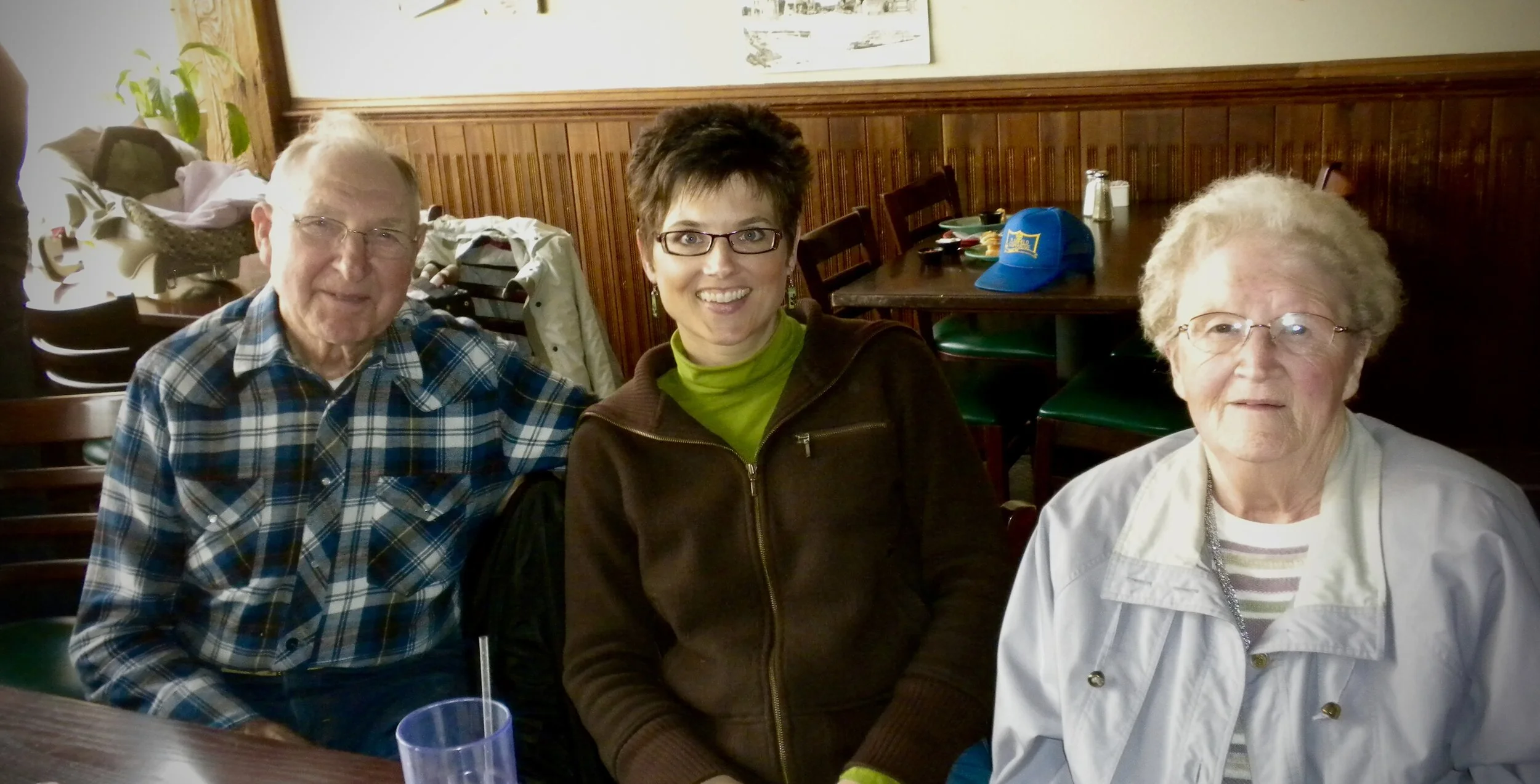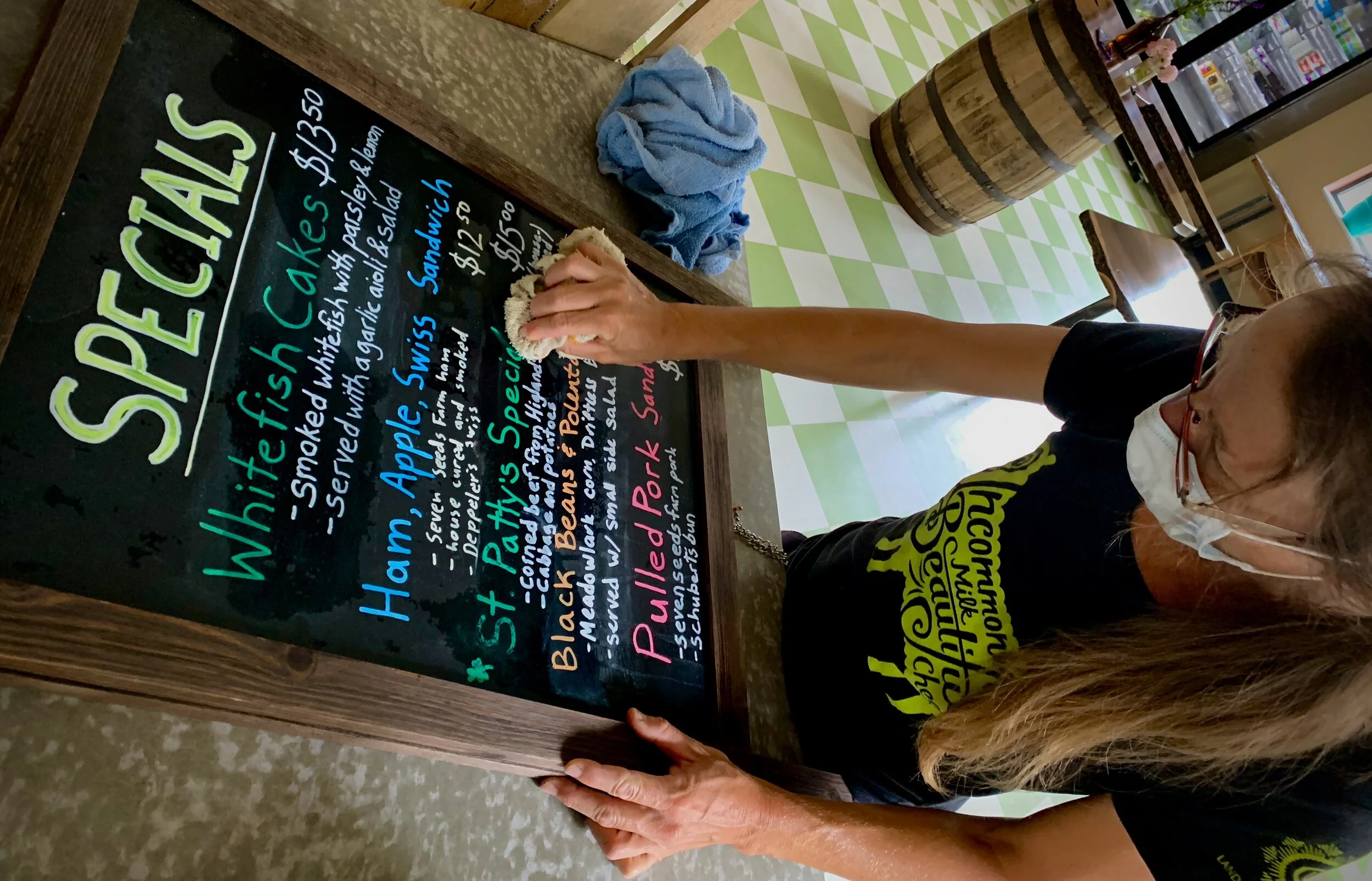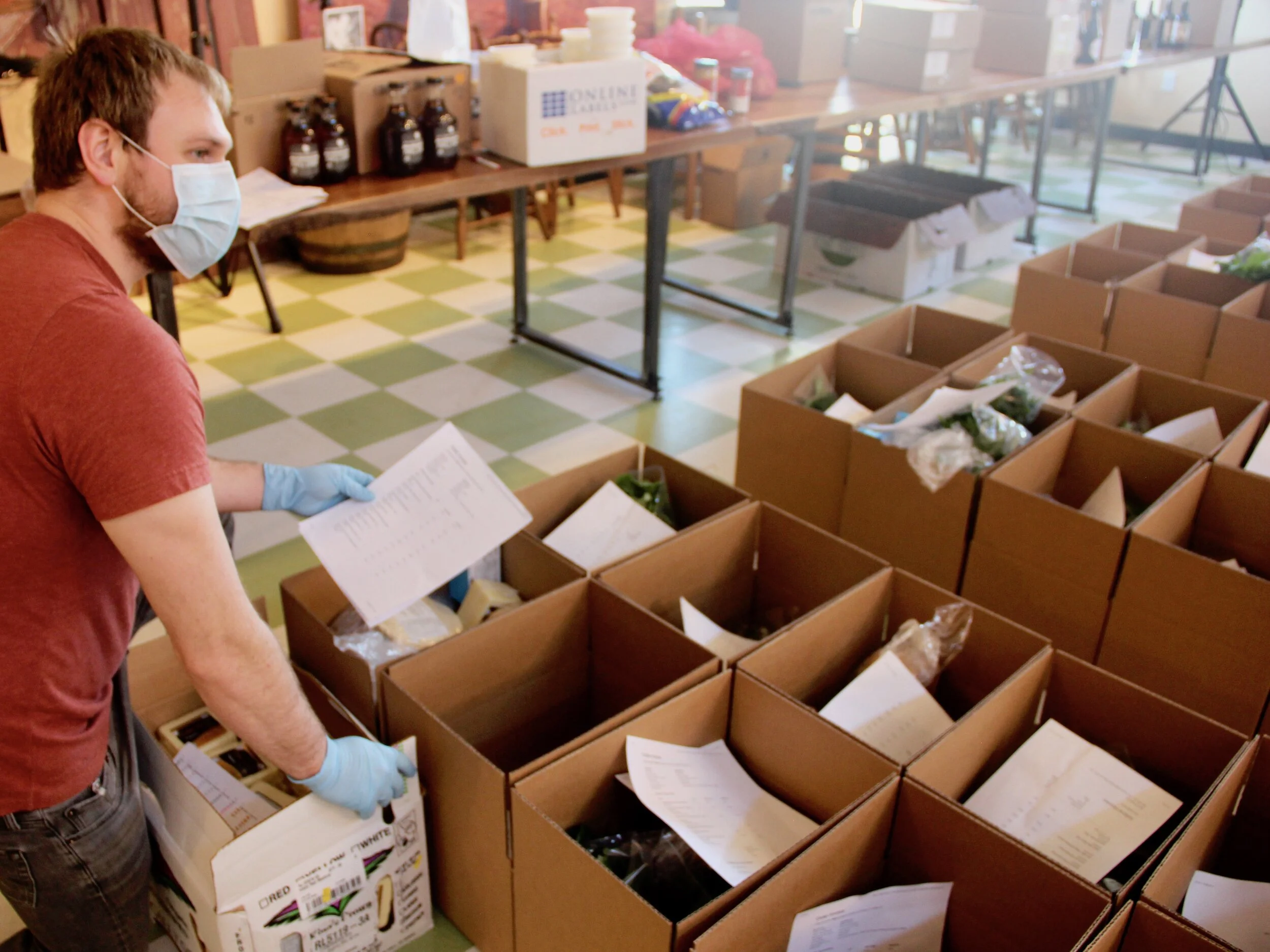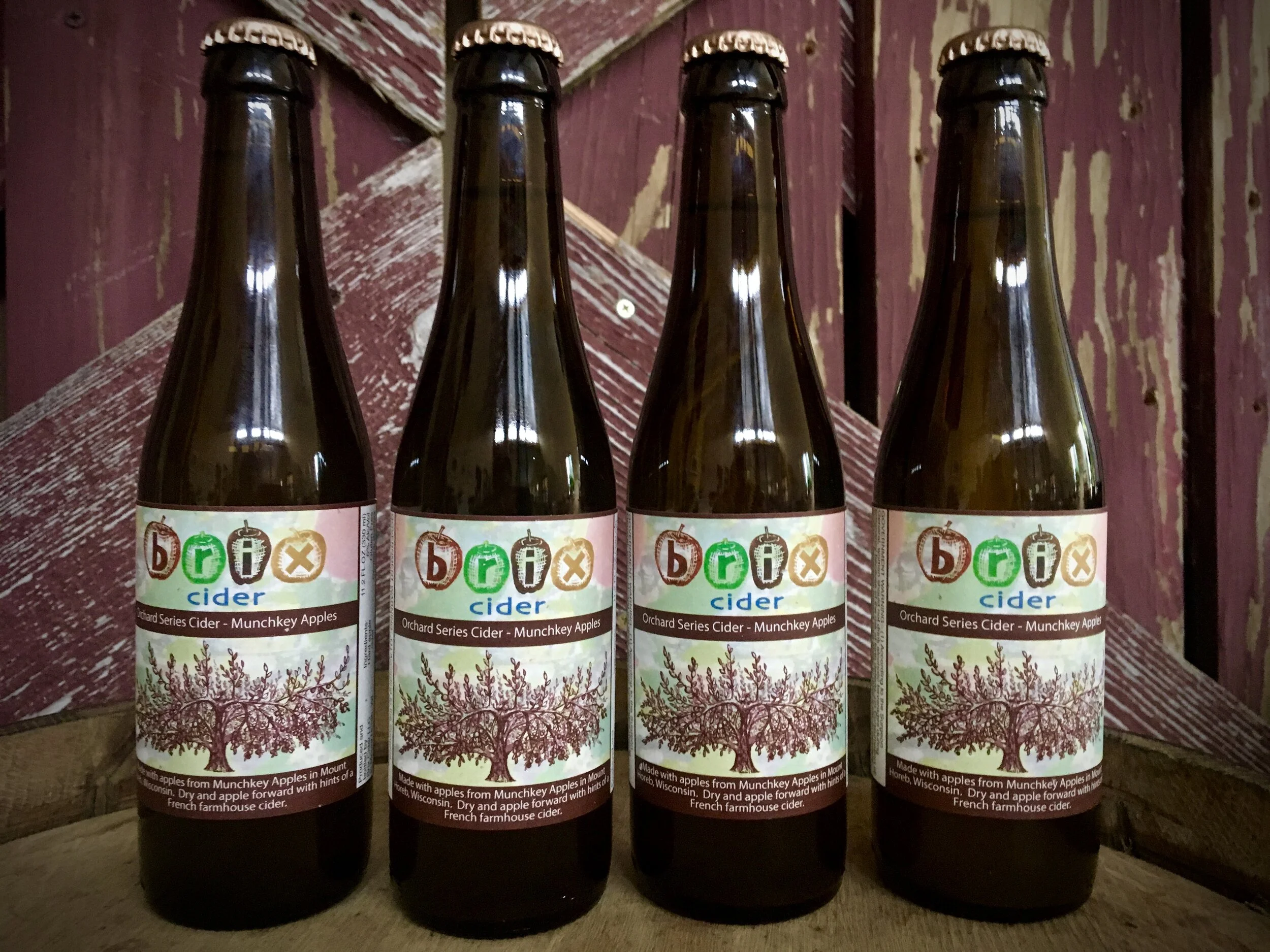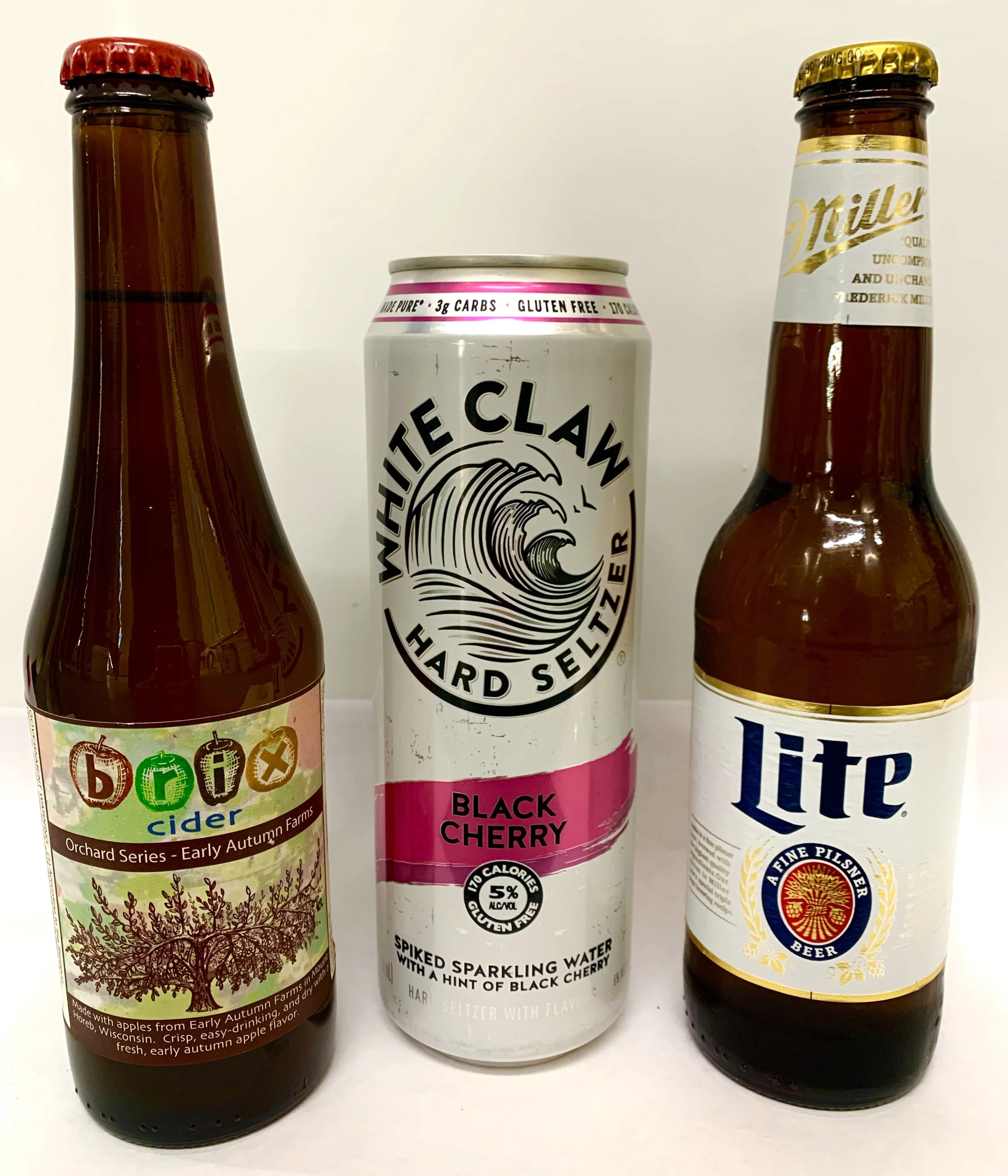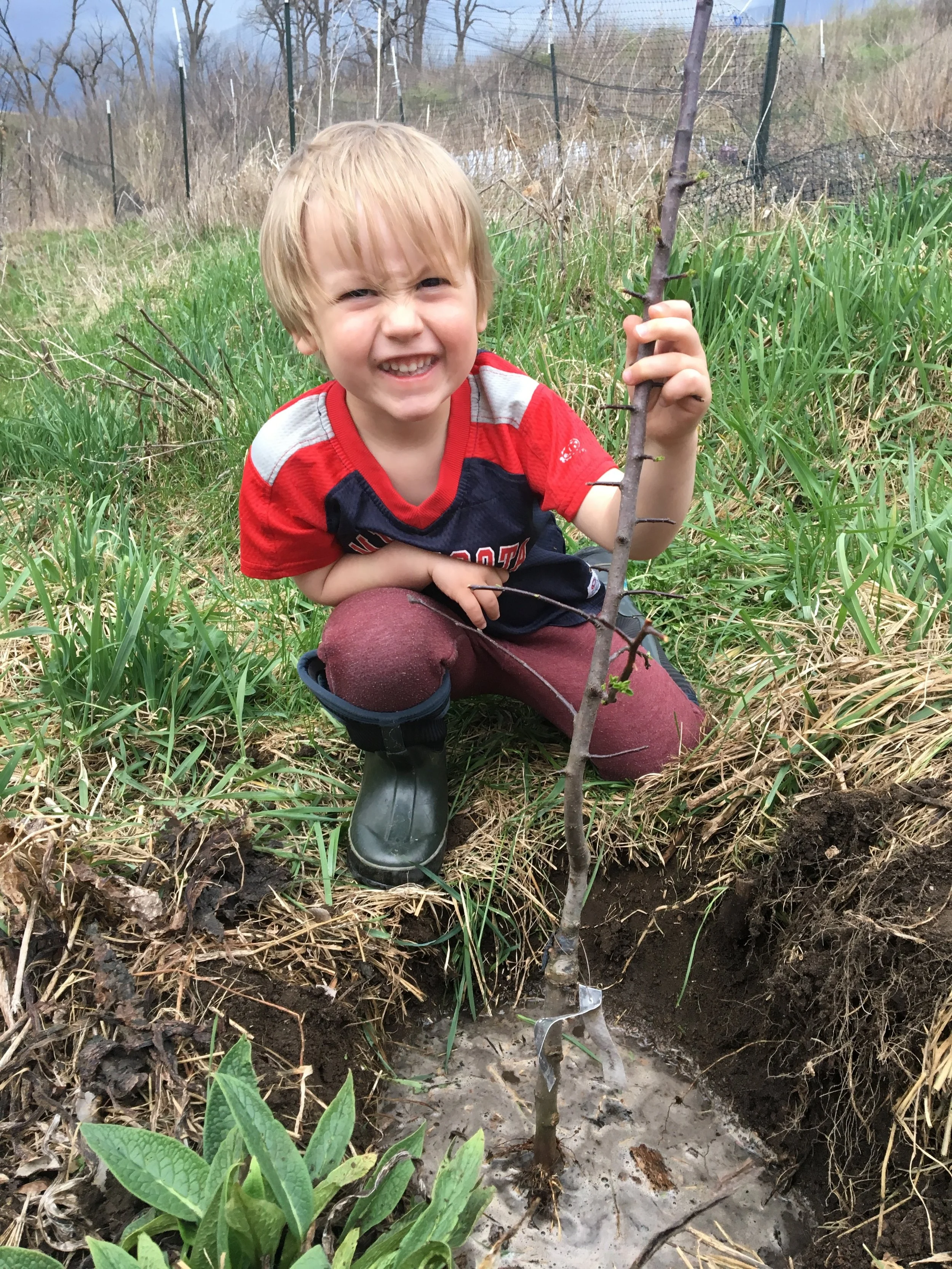How to Farm-to-Table
How to Farm-to-Table
A few months ago I wrote a guest blog post asking the question “How much local food does Brix actually buy?” (Answer: it’s impressive.) In that post I acknowledged the effort Brix puts into farm-to-table sourcing so that, by eating at Brix, I can engage with a more local, ethical food system. And that made me curious - just what kind of effort and labor goes into the farm-to-table process?
From cider to food to coffee, Brix strives to source from local farms and businesses whenever possible. Pictured above are Kerry, Kate, and Matt. Photo by Black Krim Creative.
As most eaters and cider drinkers of Brix realize, this commitment to local food addresses an interconnected web of economic, ecological, health, and community issues - local and sustainably produced food is, simply put, better for the farmer, the land, the community, and the body. But there’s still a long way to go. A recent report by The Guardian investigated the extent of food consolidation in the grocery store, illuminating the magnitude of what local food is up against. Almost 80% of dozens of common groceries are sold by just a handful of food conglomerates. And only 15 cents of every dollar we spend at the grocery store goes to the farmer.
Brix is tackling this national problem head on through local sourcing. Yet I realized I know very little about how farm-to-table actually works. So a few weeks ago I sat down with Matt Raboin to ask him about the work that goes into putting together a farm-to-table restaurant and the opportunities and challenges for a place like Brix. Here are the key takeaways that I learned during this conversation.
1. Brix’s farm-to-table model is truly unique - and a work in progress.
Whereas many restaurants source just a few flagship local items to justify their farm-to-table label, Brix committed from the start to keep their entire menu as local as possible, from grass-fed beef and pastured pork to the staples like flour, butter, and even oil. This commitment is truly innovative in the restaurant industry and, as such, there’s not really a model to follow.
“It’s always a learning process,” Matt explained. “We’re intent on sourcing from as many farms as we can. There’s always the temptation to order from R.E. Golden Produce [a local wholesale restaurant distributor], where it’s easy to just check a box for your order. It’s harder to take the extra step to text a farm and ask them if they have a certain item.”
Part of that challenge comes from the fact that most local farms are not set up to supply to restaurants. “I think most restaurants are just not buying that much from farms, so farms typically aren’t set up for restaurant distribution. Farms are seeing a sporadic, unpredictable market that only buys a little here and there.” For Matt and Marie, finding consistent sourcing partnerships while honoring the variability of produce farming can be a challenge - and an opportunity for creativity. “There’s some improvisation here. We’ll find a farmer wanting to sell something and we’ll say sure, let’s take it and figure out what to do with it.”
When Brix first started sourcing from Seven Seeds Farm (above), Marie asked the farmers what they were struggling to sell. Learning that they needed a buyer for their ham roasts, Brix created the Ham, Apple, Swiss Sammy - which is now a menu staple and customer favorite. Photo by Black Krim Creative.
Someday, Matt would like to develop a model where Brix’s menu is coordinated in partnership with a farm at the beginning of the planting season. That kind of partnership takes a lot of planning and collaboration on both sides. It very well may be the future of farm-to-table.
2. This model requires a different kind of relationship with customers.
Sourcing as local as possible means that Brix purchases what local farms can offer. Some foods might not stay consistent from week to week. The winter menu will inevitably feature different seasonal items than the summer menu. Some menu items will cost a few dollars more than the restaurant down the street. Sourcing direct from farms means that expectations around Brix’s menu needs to be different, because Brix is a different kind of restaurant.
“We try to make it obvious that we’re doing this differently. Even the cider itself is different, since we’re in the land of beer. We chose cider because apples grow here, so the cider can be truly local. But asking people to drink cider with their pizza instead of beer can be the real challenge. It requires asking people to push themselves outside their comfort zone just a little.”
Selling cider in the land of beer involves reshaping the way people think about their meal. Photo by Black Krim Creative.
Presenting a different kind of relationship with food can use a bit of storytelling and an extra level of consumer engagement. That’s why Brix has embarked on a 3-year Local Food Community Hub Project (The Brix Project) in partnership with local media company Black Krim Creative and UW-Madison to share the stories of the relationships between the people, plants, animals, and the land that coalesce into the Brix community.
3. The right kitchen staff are just as important as the right local food and farmer.
I asked Matt what the biggest challenge of the farm-to-table model is, thinking he would respond about the variability of seasonal produce or building relationships with farmers. His answer surprised me: “The biggest challenge is finding the right kitchen staff. We’re often struggling to find someone, and we end up pushing the good people we do have too hard. We need people who are skilled as a cook, but also have some knowledge and excitement about local food.”
In this conversation, it became clear that this challenge represents a bigger issue in our local food culture: “There’s this idea that being a cook is not a job to be proud of, like it’s just a temporary job. And it goes beyond the pay - I think we do pay people well. There’s just a stigma we [as a society] have placed on being a line cook.”
Talking to Matt helped me realize that the local food scene has taken big steps toward recognizing the hard work that goes into farming, but has yet to fully recognize the role of the cooks and kitchen staff who turn that local food into beautiful meals. That work involves a lot of creativity and skill, and is just as necessary in a farm-to-table restaurant.
Bringing the table together
When I set out to write this post, I wanted to honor the time and labor that Matt and Marie spend on coordinating a truly farm-to-table restaurant. Now, after reflecting on my conversation with Matt, I want that acknowledgement to extend to the farmers who take the time to coordinate weekly deliveries with Brix; to the customers who take that extra step outside their comfort zone to try a different kind of restaurant and relationship with food; and especially to the our cooks who contribute innovation, skill, and knowledge to create the farm into beautiful, delicious meals. It takes a whole community of people to bring this table together. Let’s recognize and celebrate all of us.
Photo by Black Krim Creative.
